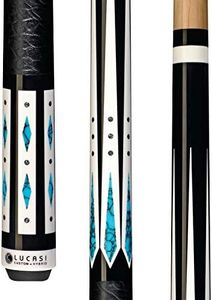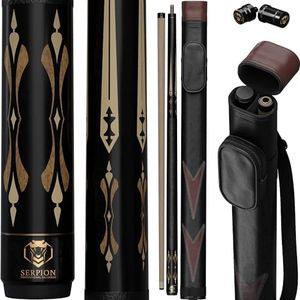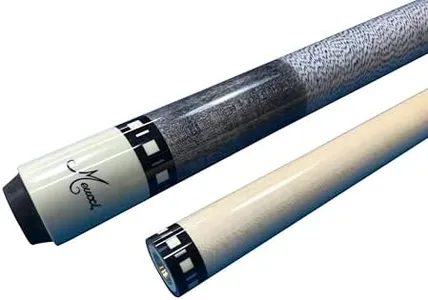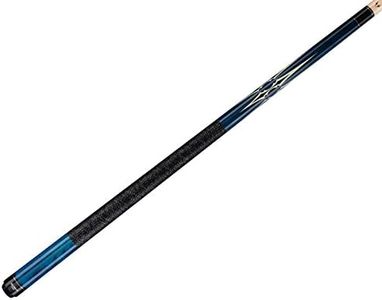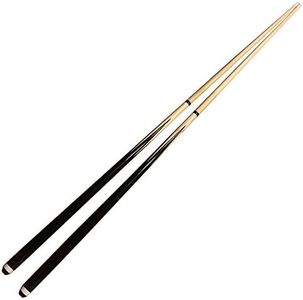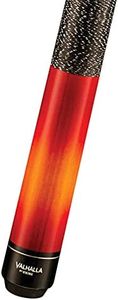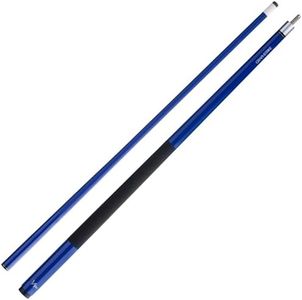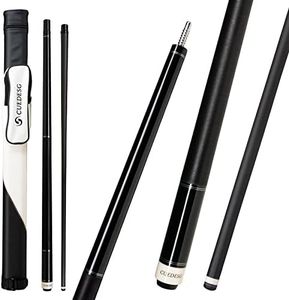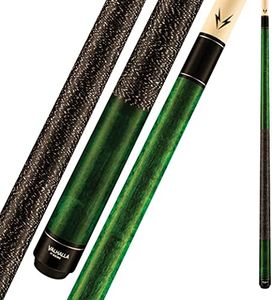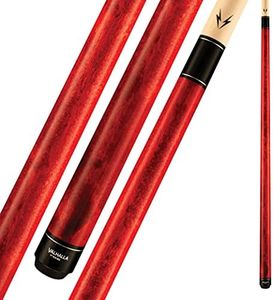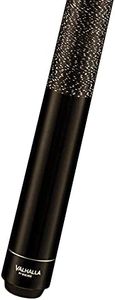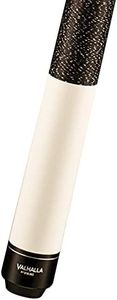We Use CookiesWe use cookies to enhance the security, performance,
functionality and for analytical and promotional activities. By continuing to browse this site you
are agreeing to our privacy policy
10 Best Pool Cues
From leading brands and best sellers available on the web.Buying Guide for the Best Pool Cues
Choosing the right pool cue can make a big difference in your gameplay, comfort, and enjoyment at the table. Before making your decision, it’s helpful to know what each part of the cue does and how different features affect performance. The best cue for you depends on your playing style, skill level, and physical preferences. Consider how the weight, length, tip type, and material match your needs. Trying different cues in person, if possible, can provide insight into what feels right for you. Remember, the perfect cue is the one that fits your hand and enhances your play, not necessarily the most expensive or high-tech option.WeightThe weight of a pool cue usually ranges from about 17 to 21 ounces. This spec matters because the weight influences how easy the cue is to maneuver and how much force you can apply to the ball. Heavier cues can give you more power but may be harder to control, while lighter cues are generally easier to handle but might lack impact on hard shots. Beginners often do well with a mid-weight cue (around 19 ounces), while experienced players might prefer heavier or lighter, depending on their stroke and shot preference. To pick the right weight, consider your strength, how much control you want, and try swinging different weights to see what feels natural.
LengthStandard pool cues measure about 57 to 59 inches, but there are longer and shorter variations. Length is important because it affects your reach and stance comfort. Shorter cues work well for younger players, people of shorter stature, or if there are tight spaces around the table, while standard-length cues fit most adult players. If you are particularly tall or have long arms, a longer cue might help you maintain good form without stretching awkwardly. Focus on choosing a cue length that allows you to comfortably execute shots without hunching or overreaching.
Tip Type and SizeCue tips come in different materials (soft, medium, hard) and sizes (typically between 11mm to 14mm in diameter). The tip spec is crucial because it influences how much spin (English) you can apply and how forgiving your shots are. Softer tips grip the ball more, allowing more spin but wearing out faster; hard tips are more durable and help with power but offer less control over spin. Tip size matters too—smaller tips are favored by advanced players for precise English, while larger tips are more forgiving and better for beginners learning fundamentals. Decide what type of shots you want to master and your comfort level with cue ball control to guide your choice.
Shaft MaterialMost cues are made from hard rock maple, but some use fiberglass, carbon fiber, or laminated wood. The shaft material affects durability, straightness over time, and how the cue feels in your hand. Maple is traditional and provides good feel and feedback; fiberglass and carbon fiber are more resistant to warping and can be easier to maintain, though they may feel different during play. If you prefer a more classic, tactile connection with your shots, wood is a reliable option. For those prioritizing low maintenance and consistent straightness, synthetic shafts might be the answer. Think about whether you value tradition or innovative material properties more.
Joint TypeCues come in one-piece and two-piece designs. Two-piece cues have joints where they screw together, often made from metal or wood. The type of joint affects the cue’s balance, feel, and portability. Metal joints can provide a more solid hit, while wood joints offer a softer touch. A two-piece cue is ideal if you want to transport your cue easily or play in multiple locations, while a one-piece cue is generally used on home tables. Choose based on whether you’ll be traveling with your cue and what kind of hitting feedback you prefer.
Grip/WrappingThe grip section may be wrapped in different materials like linen, leather, rubber, or may be left plain wood. Grip material impacts how comfortable and secure the cue feels in your hand and how much moisture it absorbs. Linen and leather wraps offer good traction and absorb sweat, rubber grips can be tackier and softer, while bare wood gives a direct connection to the cue. If your hands get sweaty or you play for long periods, a wrap may help you maintain a steady hold. If you prefer a sleeker, tactile experience, unwrapped cues might be best. Think about how much grip you want and how your hands feel during play.
